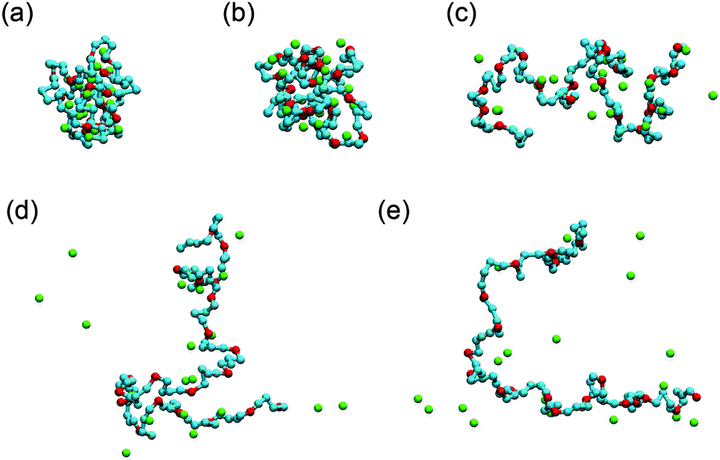GPU-Accelerated Molecular Dynamics Simulation to Study Liquid Crystal Phase Transition Using Coarse-Grained Gay-Berne Anisotropic Potential

摘要
Gay-Berne (GB) potential is regarded as an accurate model in the simulation of anisotropic particles, especially for liquid crystal (LC) mesogens. However, its computational complexity leads to an extremely time-consuming process for large systems. Here, we developed a GPU-accelerated molecular dynamics (MD) simulation with coarse-grained GB potential implemented in GALAMOST package to investigate the LC phase transitions for mesogens in small molecules, main-chain or side-chain polymers. For identical mesogens in three different molecules, on cooling from fully isotropic melts, the small molecules form a singledomain smectic-B phase, while the main-chain LC polymers prefer a single-domain nematic phase as a result of connective restraints in neighboring mesogens. The phase transition of side-chain LC polymers undergoes a two-step process:nucleation of nematic islands and formation of multi-domain nematic texture. The particular behavior originates in the fact that the rotational orientation of the mesogenes is hindered by the polymer backbones. Both the global distribution and the local orientation of mesogens are critical for the phase transition of anisotropic particles. Furthermore, compared with the MD simulation in LAMMPS, our GPU-accelerated code is about 4 times faster than the GPU version of LAMMPS and at least 200 times faster than the CPU version of LAMMPS. This study clearly shows that GPU-accelerated MD simulation with GB potential in GALAMOST can efficiently handle systems with anisotropic particles and interactions, and accurately explore phase differences originated from molecular structures.